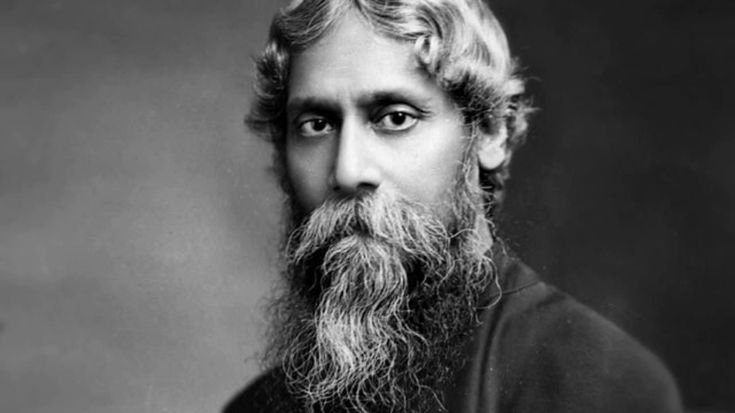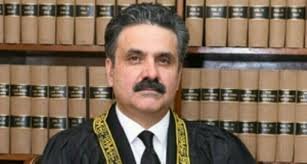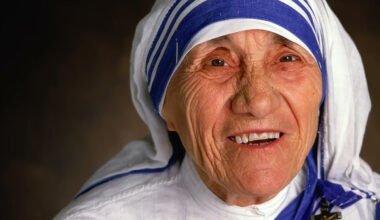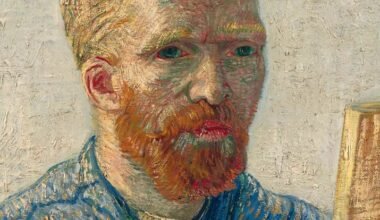Rabindranath Tagore Biography: Date Of Birth and Early Life, Family, Education, Career.
Rabindranath Tagore, a luminary in the realm of literature, art, and philosophy, stands as one of the most influential figures in Indian and world culture. Born in the 19th century and living well into the 20th, Tagore’s life spanned a period of immense change and cultural renaissance in India. His contributions to literature, music, and art have left an indelible mark on the cultural landscape of the Indian subcontinent and beyond. This comprehensive biography delves into the life, works, and legacy of this remarkable polymath, exploring his date of birth, education, illustrious career, and family background.
Date of Birth and Early Life
Birth and Family Background
Rabindranath Tagore was born on May 7, 1861, in Calcutta (now Kolkata), India. He came into the world at the Jorasanko mansion, the ancestral home of the Tagore family. This date marks the beginning of a life that would profoundly impact Indian literature, art, and philosophy for generations to come.
Tagore was born into a prominent and influential Bengali family. His father, Debendranath Tagore, was a leader of the Brahmo Samaj, a religious and social reformist movement in Bengal. The Tagore family was known for its wealth, cultural refinement, and progressive outlook, which played a crucial role in shaping young Rabindranath’s worldview and artistic sensibilities.
Childhood and Early Influences
From an early age, Rabindranath was immersed in a rich cultural and intellectual environment. The Jorasanko mansion was a hub of literary and philosophical discussions, musical soirées, and artistic endeavors. This vibrant atmosphere nurtured Tagore’s innate talents and exposed him to a wide range of ideas and artistic expressions.
As a child, Tagore was deeply influenced by the natural beauty of Bengal, which would later become a recurring theme in his writings and paintings. He was also fascinated by the diverse cultural traditions of India, including classical Sanskrit literature, Bengali folk songs, and the philosophical discourses that took place in his home.
Education
Formal Schooling and Home Education
Rabindranath Tagore’s education was a unique blend of formal schooling and home tutoring, reflecting both the traditional and progressive elements of his family background.
Early Schooling
Tagore’s formal education began at the Oriental Seminary in Calcutta. However, his experience in conventional schools was brief and largely unsatisfactory. He found the rigid structure and rote learning methods stifling his creative spirit. This early disenchantment with formal education would later influence his educational philosophy and lead to the establishment of his experimental school at Santiniketan.
Home Tutoring
Recognizing their son’s unique needs and talents, Tagore’s family opted for a more personalized approach to his education. He received extensive home tutoring in various subjects, including Bengali, Sanskrit, English, mathematics, history, and the sciences. This flexible and comprehensive education allowed young Rabindranath to explore his interests and develop his talents at his own pace.
Self-Education and Voracious Reading
Perhaps the most significant aspect of Tagore’s education was his self-directed learning. He was an avid reader from a young age, devouring books on a wide range of subjects. The family library at Jorasanko provided him with access to a vast collection of literature from around the world. This self-guided exploration of literature and ideas played a crucial role in shaping his intellectual and artistic development.
Language Proficiency
Tagore’s education placed a strong emphasis on language acquisition. He became proficient in Bengali and English from an early age and later learned Sanskrit, the classical language of Indian literature and philosophy. His multilingual skills would prove invaluable in his future career as a writer and translator, allowing him to bridge different cultural and linguistic traditions.
Artistic Training
While Tagore did not receive formal training in the fine arts, he was exposed to various art forms from childhood. Music, in particular, was an integral part of his upbringing. He learned to sing and compose songs, a skill that would later manifest in his creation of Rabindra Sangeet, a genre of music that remains popular to this day.
Brief Stint in England
In 1878, at the age of 17, Tagore was sent to England to study law at University College London. This was intended to prepare him for a career in the Indian Civil Service. However, Tagore’s stay in England was brief, lasting less than a year. He returned to India without completing his studies, as he found the formal academic environment uncongenial to his temperament and aspirations.
Despite its brevity, this period in England had a significant impact on Tagore’s worldview. It exposed him to Western literature, music, and art, broadening his cultural horizons and influencing his later works.
Lifelong Learning
One of the most remarkable aspects of Tagore’s education was its continuity throughout his life. He remained a student of the world, constantly learning, observing, and absorbing new ideas and experiences. This lifelong commitment to learning and intellectual growth was reflected in his ever-evolving artistic and philosophical output.
Career
Rabindranath Tagore’s career was multifaceted and spanned several decades, encompassing literature, music, art, education, and social reform. His contributions in these diverse fields have left an enduring legacy that continues to influence Indian and world culture.
Literary Career
Early Beginnings
Tagore’s literary career began at an astonishingly young age. He started composing poetry when he was just eight years old, and by the age of sixteen, he had begun publishing his poems under the pseudonym “Bhanusimha.” His first substantial publication, a collection of poems titled “Bhānusiṃha Ṭhākurer Paḍāvalī” (Songs of Bhānusiṃha), was released in 1884 when he was only 23 years old.
Poetry
Poetry remained a central focus of Tagore’s literary career throughout his life. His poetic works are characterized by their lyrical beauty, profound philosophical insights, and deep engagement with nature and human emotions. Some of his most celebrated poetry collections include:
- “Gitanjali” (Song Offerings, 1910): This collection, translated into English by Tagore himself, brought him international acclaim and played a crucial role in his receiving the Nobel Prize in Literature.
- “Balaka” (The Flight of Cranes, 1916): A collection that reflects Tagore’s evolving poetic style and his engagement with contemporary social and political issues.
- “Purabi” (The Eastern, 1925): This collection showcases Tagore’s mature poetic voice and his deep connection with Bengali folk traditions.
Novels and Short Stories
While primarily known for his poetry, Tagore was also a prolific writer of prose fiction. His novels and short stories often explored complex social issues, human relationships, and the changing face of Bengali society. Some of his notable works in this genre include:
- “Gora” (1910): A novel that delves into questions of identity, nationalism, and religious orthodoxy in colonial India.
- “Ghare Baire” (The Home and the World, 1916): A novel that examines the interplay between tradition and modernity, nationalism and cosmopolitanism.
- “Chokher Bali” (A Grain of Sand, 1903): A groundbreaking novel that addresses themes of desire, infidelity, and women’s position in society.
Essays and Non-fiction
Tagore was a prolific essayist, writing on a wide range of topics including politics, education, philosophy, and aesthetics. His non-fiction works provide valuable insights into his thought process and his vision for India and the world. Notable collections of his essays include:
- “Nationalism” (1917): A collection of lectures critiquing the concept of nationalism and advocating for a more humanistic worldview.
- “Creative Unity” (1922): Essays exploring Tagore’s philosophy of education and his vision for cross-cultural understanding.
Drama
Tagore made significant contributions to Bengali theatre, writing and producing numerous plays throughout his career. His dramas often blended elements of classical Sanskrit theatre with contemporary themes and Western theatrical techniques. Some of his notable plays include:
- “Chitrangada” (1892): Based on a story from the Mahabharata, this play explores gender roles and identity.
- “The Post Office” (1912): A symbolic play that has been widely performed and interpreted around the world.
Musical Career
Tagore’s contributions to music were as significant as his literary achievements. He composed over 2,000 songs, creating a new genre known as Rabindra Sangeet.
Rabindra Sangeet
Rabindra Sangeet, or “Tagore Songs,” represents a unique blend of classical Indian music, folk traditions, and Western influences. These songs cover a wide range of themes, from devotional hymns to love songs, patriotic anthems to nature poems. Many of Tagore’s songs have become an integral part of Bengali culture and are widely performed to this day.
Notable examples of Rabindra Sangeet include:
- “Amar Sonar Bangla” (My Golden Bengal): Later adopted as the national anthem of Bangladesh.
- “Jana Gana Mana” (Thou Art the Ruler of All Minds): Adopted as the national anthem of India.
Artistic Career
While Tagore began painting seriously only in his sixties, he quickly developed a unique style that gained recognition in India and abroad.
Painting and Visual Arts
Tagore’s paintings are characterized by their bold lines, vibrant colors, and often abstract forms. He held several exhibitions of his artwork in Europe and the United States, which were well-received by critics and audiences alike.
His visual art, like his writing, often explored themes of nature, human figures, and landscapes. Tagore produced over 2,500 paintings and drawings in his lifetime.
Educational Career
Tagore’s disillusionment with the conventional education system led him to establish his experimental school, which later evolved into a university.
Establishment of Santiniketan
In 1901, Tagore founded a school named Santiniketan (Abode of Peace) in rural Bengal. This school was based on the ancient Indian concept of a forest school, where learning took place in harmony with nature.
Visva-Bharati University
In 1921, Santiniketan was expanded into Visva-Bharati University. This institution embodied Tagore’s vision of a place where Eastern and Western cultures could meet and engage in dialogue. The university attracted scholars and students from around the world and became a center for the study of Indian culture, arts, and humanities.
Social and Political Involvement
While Tagore was not directly involved in politics, his writings and public statements had a significant impact on social and political discourse in India and beyond.
Critique of Nationalism
Tagore was critical of narrow nationalism and advocated for a more inclusive, humanistic approach to social and political organization. His views on nationalism, expressed in essays and lectures, often put him at odds with other Indian nationalist leaders of his time.
Support for Indian Independence
Despite his critiques of nationalism, Tagore supported India’s struggle for independence from British rule. He renounced his knighthood in 1919 in protest against the Jallianwala Bagh massacre.
Rural Development
Tagore was deeply concerned with the plight of rural India. He initiated several rural reconstruction projects around Santiniketan, aiming to improve agricultural practices, health, and education in nearby villages.
Family
Rabindranath Tagore’s family background played a crucial role in shaping his worldview, artistic sensibilities, and intellectual pursuits. The Tagore family was one of the most prominent and influential families in Bengal during the 19th and early 20th centuries.
Paternal Lineage
Dwarkanath Tagore (Grandfather)
Rabindranath’s grandfather, Dwarkanath Tagore (1794-1846), was a pioneering entrepreneur and one of the first Indian industrialists. He was known for his business acumen, philanthropic activities, and his efforts to bridge Indian and Western cultures. Dwarkanath’s cosmopolitan outlook and entrepreneurial spirit set the stage for the family’s prominence in Bengal society.
Debendranath Tagore (Father)
Rabindranath’s father, Debendranath Tagore (1817-1905), was a significant figure in the Bengal Renaissance. He was a leader of the Brahmo Samaj, a reformist movement that sought to modernize Hindu traditions and promote rationalism and social reform. Debendranath’s spiritual and philosophical pursuits had a profound influence on young Rabindranath’s intellectual development.
Maternal Lineage
Sarada Devi (Mother)
Rabindranath’s mother, Sarada Devi (1826-1875), came from a relatively modest background compared to the Tagore family. She was known for her piety and devotion to her family. Rabindranath lost his mother at a young age, and this early loss is often reflected in the themes of maternal love and loss in his writings.
Siblings
Rabindranath was the youngest of thirteen surviving children. His siblings, many of whom were significantly older than him, played important roles in his upbringing and early education.
Notable Siblings
- Dwijendranath Tagore (1840-1926): The eldest brother, known for his contributions to Bengali philosophy and mathematics.
- Satyendranath Tagore (1842-1923): The first Indian to join the Indian Civil Service.
- Jyotirindranath Tagore (1849-1925): A talented musician and artist who greatly influenced Rabindranath’s artistic development.
- Swarna Kumari Devi (1855-1932): One of the earliest Bengali women novelists.
Marriage and Children
Mrinalini Devi (Wife)
In 1883, at the age of 22, Rabindranath married Mrinalini Devi (1873-1902). The marriage was arranged, as was customary at the time. Despite the arranged nature of their union, Tagore and Mrinalini developed a deep and loving relationship. Mrinalini’s early death in 1902 was a profound loss for Tagore and influenced many of his later works.
Children
Rabindranath and Mrinalini had five children:
- Madhurilata (Bela) (1886-1918)
- Rathindranath (1888-1961)
- Renuka (1890-1904)
- Mira (1892-1902)
- Samindranath (1896-1907)
Tragically, Tagore outlived all but one of his children. The loss of his children, particularly at young ages, was a source of deep sorrow for Tagore and is reflected in many of his writings.
Extended Family and Jorasanko
The Tagore family residence, Jorasanko Thakur Bari (Tagore House) in Calcutta, was more than just a home; it was a cultural and intellectual hub. The extended Tagore family, including uncles, aunts, and cousins, all contributed to creating an environment rich in arts, literature, and progressive thinking.
Notable members of the extended family include:
- Abanindranath Tagore (1871-1951): Rabindranath’s nephew and a pioneer of modern Indian art.
- Gaganendranath Tagore (1867-1938): Another nephew, known for his contributions to Indian art, particularly in caricature and cubist painting.
Legacy and Family Traditions
The Tagore family’s commitment to arts, education, and social reform continued through Rabindranath’s descendants. His son Rathindranath and daughter-in-law Pratima Devi played crucial roles in managing and developing Visva-Bharati University after Rabindranath’s death.
Today, the Tagore family continues to be associated with cultural and intellectual pursuits in India, with many descendants involved in literature, arts, and academia.
Conclusion
Rabindranath Tagore’s life, spanning from 1861 to 1941, was a remarkable journey of creativity, intellectual exploration, and spiritual growth. His date of birth marks the beginning of a life that would profoundly impact Indian and world culture. His unconventional education, blending traditional learning with exposure to diverse cultures, laid the foundation for his multifaceted career.
As a writer, poet, musician, artist, educator, and philosopher, Tagore left an indelible mark on the cultural landscape of India and the world. His literary works, including poems, novels, and essays, continue to be widely read and studied. The music he composed, known as Rabindra Sangeet, remains an integral
FAQs on Rabindranath Tagore Biography
- Who was Rabindranath Tagore?
- Rabindranath Tagore was a Bengali poet, philosopher, artist, and polymath who reshaped Indian literature, music, and art. He was the first non-European to win the Nobel Prize in Literature in 1913.
- What are the major works of Rabindranath Tagore?
- Some of his notable works include Gitanjali (Song Offerings), Ghare-Baire (The Home and the World), Chokher Bali (A Grain of Sand), and numerous poems, short stories, and plays.
- When and where was Rabindranath Tagore born?
- Tagore was born on May 7, 1861, in Calcutta (now Kolkata), India, into a prominent and wealthy family.
- Why did Rabindranath Tagore win the Nobel Prize in Literature?
- Tagore won the Nobel Prize in 1913 for his book Gitanjali (Song Offerings), which is a collection of deeply spiritual poems that captured the essence of Indian mysticism and philosophy.
- What is Rabindranath Tagore’s contribution to education?
- Tagore founded Visva-Bharati University in 1921 at Santiniketan, promoting a blend of Indian and Western educational models, focusing on holistic development and creativity.
- What is Tagore’s influence on Indian nationalism?
- Though Tagore was critical of the extremism in nationalist movements, he supported Indian independence. He also penned India’s national anthem, Jana Gana Mana.
- How did Rabindranath Tagore influence art and culture?
- Tagore revolutionized Bengali literature and music. He introduced modernism in art, blending Eastern and Western styles, and his compositions, known as Rabindra Sangeet, are a major influence in Indian music.
- When did Rabindranath Tagore die?
- Rabindranath Tagore passed away on August 7, 1941, at the age of 80, in Kolkata, India.
- What were Rabindranath Tagore’s views on humanity and universalism?
- Tagore advocated for unity, peace, and cultural exchange between the East and West. His works often conveyed deep messages about humanity, universalism, and the spirit of freedom.
- What were Tagore’s achievements apart from literature?
- Apart from being a writer, Tagore was an accomplished artist, philosopher, and educational reformer. He painted over 2,000 pieces of art, composed songs, and contributed to social and educational reform.






